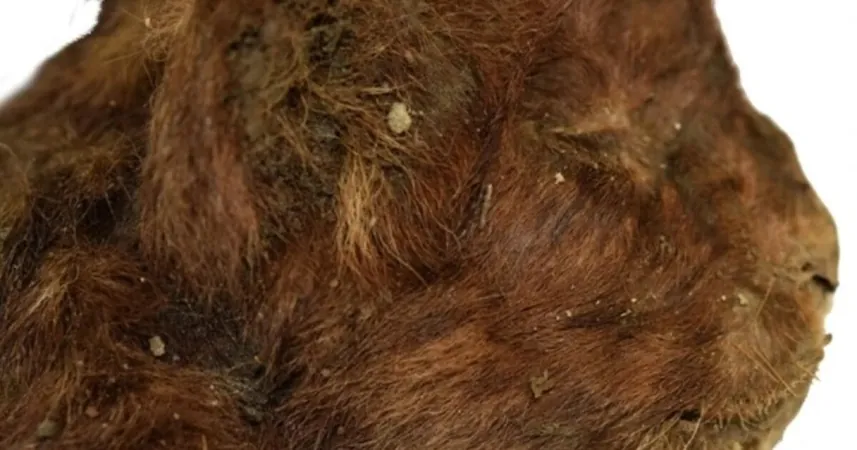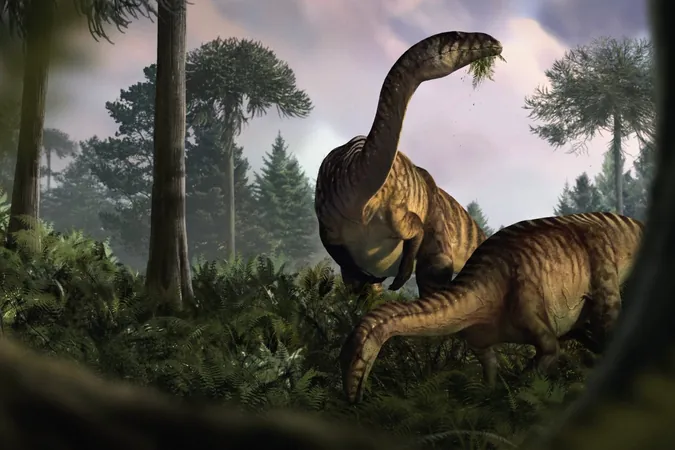
Scientists Unearth 35,000-Year-Old Saber-Toothed Kitten Frozen in Siberian Permafrost!
2024-11-17
Author: Siti
Introduction
In a groundbreaking discovery in Russia’s Sakha Republic, also known as Yakutia, researchers have unveiled the remarkably preserved remains of a 35,000-year-old saber-toothed cub from the permafrost. Found in 2020 but recently studied and published in the journal 'Scientific Reports,' this ancient feline was only three weeks old when it met its mysterious end.
Remarkable Preservation
The kitten, astonishingly well-preserved, still boasted its whiskers and claws, and was enveloped in a coat of short, thick, soft, dark brown fur, measuring about 20 to 30 millimeters in length. This extraordinary preservation offers an unprecedented opportunity for scientists to gain insights into a species long vanished from Earth.
A New Understanding of Extinct Mammals
“In a first for paleontology, we've begun to truly understand the external features of an extinct mammal with no living counterparts,” remarked the study's authors. The species in question, Homotherium latidens, is recognizable for its impressive canine teeth which protruded prominently from its mouth, crucial for hunting prey. While saber-toothed cats are thought to have vanished approximately 12,000 years ago, at the tail-end of the Pleistocene, this captivating find has reopened discussions about their adaptations and ecology.
Radiocarbon Dating and Physical Traits
Radiocarbon dating of the kitten reveals that it was buried in the icy ground for at least 35,000 years, allowing researchers to examine the animal's physical traits, including its fur texture, muscle development, and muzzle shape for the very first time. Comparisons between the extinct cub and modern felines, particularly lions, highlighted distinct differences: the saber-toothed kitten possessed wider paws but lacked carpal pads—critical for shock absorption in contemporary cats. This intriguing feature suggests adaptations that may have facilitated better movement in the snowy terrain during the Ice Age.
Anatomical Quirks and Hunting Strategies
Moreover, the study noted the cub had a robust neck, an unusually shaped muzzle, small ears, a considerably large mouth opening, and elongated forelimbs. These anatomical quirks might have played vital roles in its hunting strategies and survival, sparking further interest in understanding the lifestyle of Homotherium.
Siberia's Unique Preservation Conditions
This isn't the first remarkable find from Siberia's harsh environment. Just last August, gold miners stumbled upon a woolly mammoth with a horn still attached, and earlier, scientists reported conducting a necropsy on a fully mummified wolf also trapped in the permafrost. These discoveries underscore the unique conditions of Siberia—hot and cold weather cycles combined with arid air create perfect preservation environments for ancient remains, offering time capsules for modern science to unlock the secrets of our planet's prehistoric past.
Conclusion
As the research continues, experts are eager to delve deeper into the life of this saber-toothed kitten, hoping it will shed new light on the enigmatic world of Ice Age mammals. Stay tuned, because the past holds more surprises than we can imagine!





 Brasil (PT)
Brasil (PT)
 Canada (EN)
Canada (EN)
 Chile (ES)
Chile (ES)
 España (ES)
España (ES)
 France (FR)
France (FR)
 Hong Kong (EN)
Hong Kong (EN)
 Italia (IT)
Italia (IT)
 日本 (JA)
日本 (JA)
 Magyarország (HU)
Magyarország (HU)
 Norge (NO)
Norge (NO)
 Polska (PL)
Polska (PL)
 Schweiz (DE)
Schweiz (DE)
 Singapore (EN)
Singapore (EN)
 Sverige (SV)
Sverige (SV)
 Suomi (FI)
Suomi (FI)
 Türkiye (TR)
Türkiye (TR)